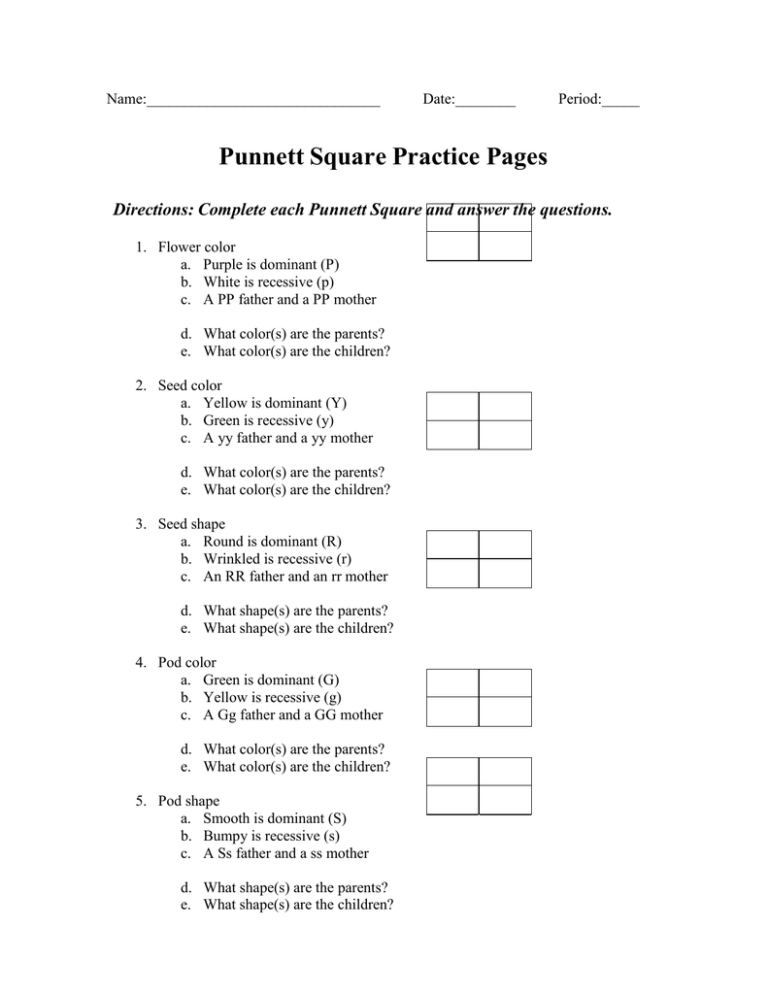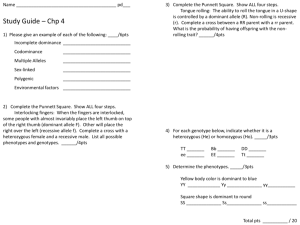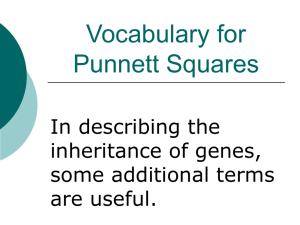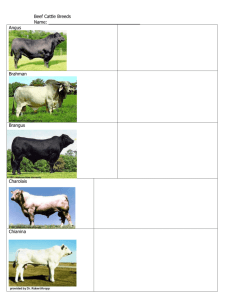Punnett Square Practice Pages - Pregitzersninjascienceclasses
advertisement

Name:_______________________________ Date:________ Period:_____ Punnett Square Practice Pages Directions: Complete each Punnett Square and answer the questions. 1. Flower color a. Purple is dominant (P) b. White is recessive (p) c. A PP father and a PP mother d. What color(s) are the parents? e. What color(s) are the children? 2. Seed color a. Yellow is dominant (Y) b. Green is recessive (y) c. A yy father and a yy mother d. What color(s) are the parents? e. What color(s) are the children? 3. Seed shape a. Round is dominant (R) b. Wrinkled is recessive (r) c. An RR father and an rr mother d. What shape(s) are the parents? e. What shape(s) are the children? 4. Pod color a. Green is dominant (G) b. Yellow is recessive (g) c. A Gg father and a GG mother d. What color(s) are the parents? e. What color(s) are the children? 5. Pod shape a. Smooth is dominant (S) b. Bumpy is recessive (s) c. A Ss father and a ss mother d. What shape(s) are the parents? e. What shape(s) are the children? 6. Flower position a. Along stem is dominant (A) b. At tip is recessive (a) c. An Aa father and an Aa mother d. What flower position(s) are the parents? e. What flower position(s) are the children? 7. Plant height a. Tall is dominant (T) b. Short is recessive (t) ? T TT ? TT t Tt Tt c. What is the genotype of the missing parent? d. What are the phenotypes of the parents? e. What are the phenotypes of the children? 8. Chin cleft in humans a. Chin cleft is dominant (C) b. No chin cleft is recessive (c) ? c Cc c Cc ? cc cc c. What is the genotype of the missing parent? d. What are the phenotypes of the parents? e. What are the phenotypes of the children? 9. Fur color in rabbits a. Black fur is dominant (B) b. White fur is recessive (b) ? B Bb B Bb ? Bb Bb c. What is the genotype of the missing parent? d. What are the phenotypes of the parents? e. What are the phenotypes of the children? 10. Dimples in humans a. Dimples are dominant (D) b. No dimples is recessive (d) ? D DD ? dD d dd Dd c. What is the genotype of the missing parent? d. What are the phenotypes of the parents? e. What are the phenotypes of the children? 11. Whiskers in seals a. Long whiskers are dominant (W) b. Short whiskers are recessive (w) ? W WW W WW ? WW WW c. What is the genotype of the missing parent? d. What are the phenotypes of the parents? e. What are the phenotypes of the children? 12. Purple people eater horns a. One horn is dominant (H) b. No horns are recessive (h) ? h hh h hh ? hh hh c. What is the genotype of the missing parent? d. What are the phenotypes of the parents? e. What are the phenotypes of the children? 13. Incomplete dominance in snapdragons (hint: look at your notes) a. Red flowers are dominant (R) b. White flowers are recessive (r) c. An Rr father and an Rr mother d. What color(s) are the parents? e. What color(s) are the children? 14. Codominance in human blood (hint: look at your notes) a. Types A and B are dominant (A, B) b. Type O is recessive (O) c. An OA father and an OB mother d. What are the blood types of the children? 15. Hair color in humans (hint: look at your notes) a. Dark hair is dominant (D) b. Light hair is recessive (d) c. A Dd father and a Dd mother d. e. f. g. What color hair do the parents have? What color hair do the children have? Is there only one gene that affects hair color in humans? What besides genes influences traits?








